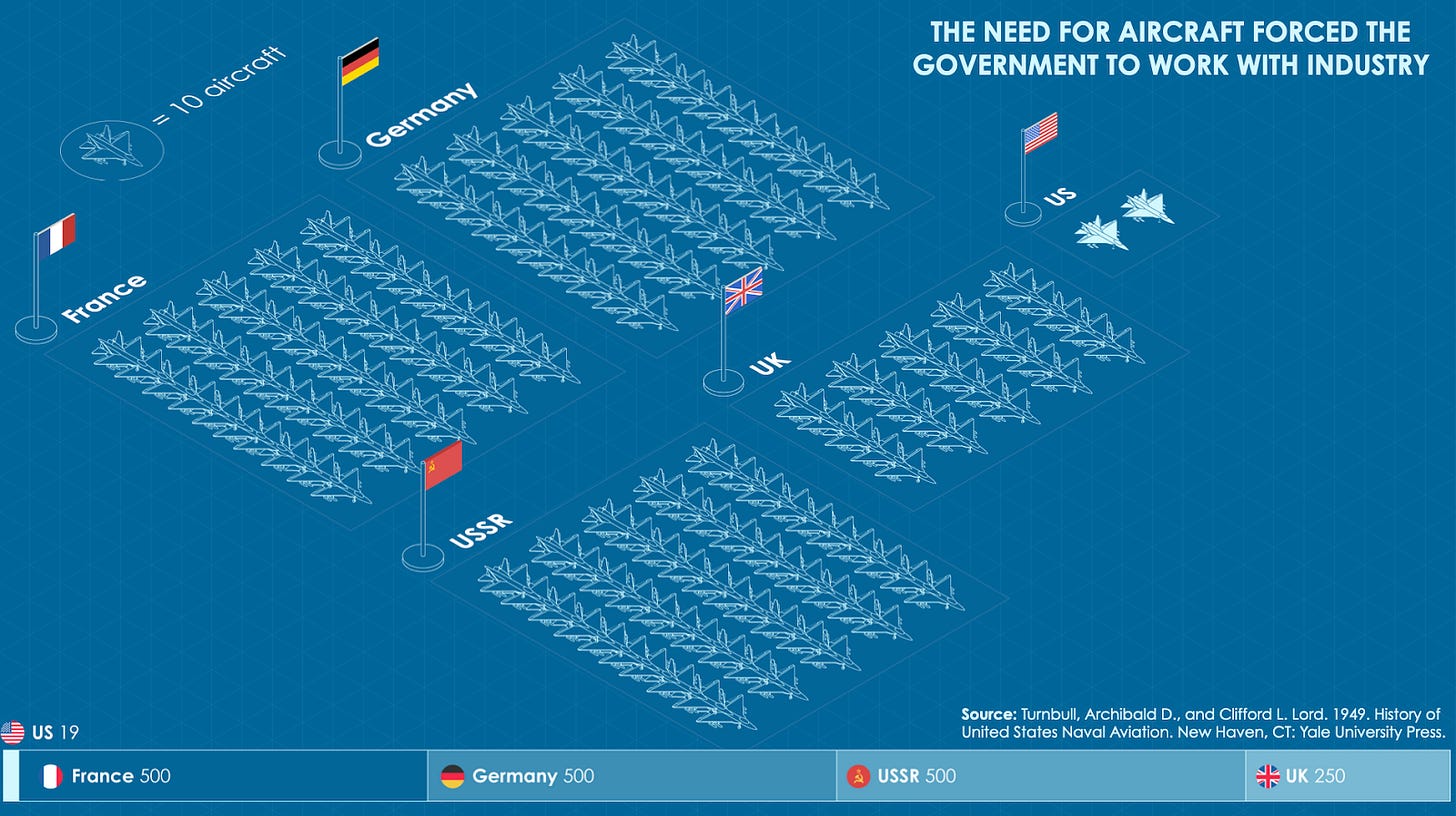The Defense Industry at SXSW? YES!
Using Defense Money to Grow Your Unicorn - A Few Lessons Learned…
Jeff Decker is the managing director of the Hacking for Defense project and a co-instructor of the Hacking for Defense graduate course, as well as a Social Science research scholar at Stanford University.
I recently had the honor of speaking at SXSW on the topic of Using Defense Money to Grow Your Unicorn. This was my first time at SXSW and the amount and level of thought-provoking events and speakers was inspiring. Talks, meet-ups, salons, music, film, and the tech - robots everywhere - and startup founders looking to connect with investors who might help make their dreams a reality. The Defense industry is ripe for innovation and SXSW was a fertile ground for planting seeds that could possibly entice some founders to look to the Defense industry to truly grow a unicorn.
Before diving in, I first offered a little history on how the Defense Department has historically obtained new technology – in essence, the government built what it needed.
Before WWI, the U.S. government had a good handle on what it needed and it developed most of the technology in the world. They had the engineers, skills, and facilities to design, prototype and manufacture its needs in shipyards, armories and arsenals. You need some bullets? I got you. You need a bigger ship, no problem. The tech wasn’t very complex and the government could churn out what was needed. On the rare occasion that the government worked with companies, it did so with a strong idea of what it wanted the company to produce because it still designed and prototyped the technologies. When it asked companies for something, the government knew exactly what the product should look like, what its specs should be, and the general cost. With a government-produced prototype in hand, the Department of Defense determined which company to contract with based on the cost and time it would take the company to manufacture at scale. It was a make versus buy scenario. Companies didn’t need to communicate a description or explanation of the product or even talk about how the product would be useful. The government prescribed the need. Companies just built.
But then Aircraft changed everything - WWII
For the first time in history, the government did not possess the ability to design, prototype and manufacture aircraft. In fact, it tried on several occasions and failed. The U.S. was woefully underprepared and had few planes in its fleet. Without the ability to build aircraft, the government couldn’t simply say, “This is what we need. Build it based on the prototypes we’ve developed.” This inability forced the government to work with industry as an idea partner. This partnership caused the restructure of the military production system.
Since the government lacked the engineering expertise and manufacturing facilities, it couldn’t build the aircraft that was so vital to the war. These shortcomings caused the U.S. to be at a major disadvantage going into WWII where aircraft was one of the most important technologies going into the war (the U.S. had 19 aircraft!). The U.S. worked with a handful of companies through WWII to produce aircraft capable of competing with the Germans. The partnership was successful and created companies that would later become household names like Hughes Aircraft, Boeing, Lockheed Martin and others.
The Korean War brought its own set of challenges - Outmanned and Outgunned
As in WWI and WWII, the U.S. was at a huge disadvantage when the Korean war started. Not only did the U.S. enter Korea with WWII capabilities, they were outmanned. The U.S. needed more fighters. The realization was made when over a million Chinese poured across the border and pushed back the U.S. Time magazine called it, “The worst defeat in American history.” The U.S. needed to do something. The U.S. had the nuclear backstop, but there was a lot of opportunity in between. Rather than pursuing a specific capability like aircraft, the Pentagon developed an open-ended policy to pursue “high technology.” Technology, policymakers believed, would offset Chinese and North Korean numbers. This is where companies stepped in and created technologies – this innovation period led to all kinds of technologies, like the IBM Defense Calculator which was a predecessor to the first personal computer.
If WWII represented a fundamental restructuring of the government production system, Korea represented a fundamental restructuring of the government innovation system. For the first time, the U.S. government didn’t know what it could use to offset its adversaries. Consequently, companies needed to describe their product, when and where it could be used and who would use it, as well as explain how it could be valuable in an effort to have the U.S. government adopt it. The communication between the government and industry fundamentally changed and the idea of a dual-use product, or a product that can serve both commercial and government customers, hit the mainstream.
Iron Man
Today, the term “dual-use” is a buzzword. Many companies pursue dual-use applications to tap into government funding. However, very few companies appreciate that the term refers to a product, but don’t realize that dual-use is not a strategy.
Iron Man is a good example. In WWII, the U.S. had a real life Iron Man in Howard Hughes who went on to create innovations in aircraft and satellites, to name but two. Today, using the Iron Man principle is how billionaires like Musk, Thiel, and Luckey create dual-use products in SpaceX, Palantir, and Anduril (see a full article on the Iron Man concept here). They create a product to give the Pentagon what it needs, not what it wants. Specifically, these companies use their own money to develop capability; create the technology outside of defense requirements to fill a government use-case that also has the potential for some sort of commercial appeal.
In 2023, geopolitics are at play and the U.S. is once again the underdog. The race for AI is on and becoming more omnipresent every day. In 2017, Russian president Vladimir Putin joined the war of words concerning the international race to develop artificial intelligence when he addressed a group of students and predicted that whichever country leads the way in AI research will come to dominate global affairs.
“Artificial intelligence is the future, not only for Russia, but for all humankind,” said Putin, reports RT. “It comes with colossal opportunities, but also threats that are difficult to predict. Whoever becomes the leader in this sphere will become the ruler of the world.”
Currently, the U.S. leads in AI - but for how long and at what cost?
So how do you create a unicorn using Defense money? First, companies need to determine their defense go-to-market strategy. In addition to the Iron Man strategy, here are two others that companies are using to great success:
Science Project / Defense-first
Even if you don’t have an actual commercial product yet, but you have a great idea, you can use government money and access to facilities to finish it. The U.S. government is the biggest (and sometimes only) buyer - just like they were for satellites and rockets in the early 2000’s before SpaceX. The government actually offers technology companies easy money
Paint it Camouflage / Commercial-first
The holy grail for companies is having a dual-use product – a product that can have commercial traction as well as Defense capabilities fair better in the defense market.
The key is that communication matters when selling to defense. Entrepreneurs must communicate the value their tech unlocks for the Defense Department. Put simply, it’s not the tech, its the value of the tech
Companies that succeed with the commercial-first GTM have three things going for them:
previous commercial product-market fit proving out the technology
digital solutions for which the Defense Department was previously using insufficient analog solutions
financial and manpower resources to create federal teams capable of acquiring defense customers, which can take years.
Summary
In summary, there are opportunities to work with the Defense Department to build technology. In fact, the Defense Department will pay you to create that technology if the idea is strong enough and you are clear on how it adds value to the Defense Department customer. Dual-use products have even more opportunity. The road is not an easy one, but once you find your way, the opportunities are endless.
Want to learn more? Follow our H4D substack blog at @StanfordH4D.
Hacking for Defense, a graduate-level course taught at more than 70 colleges and universities worldwide and on three continents. More than 2,000 students have successfully completed its program.









Great article!